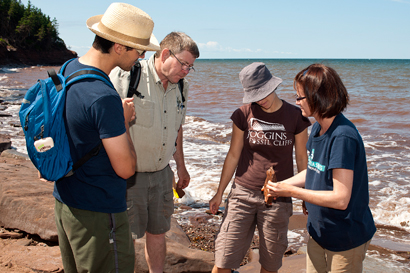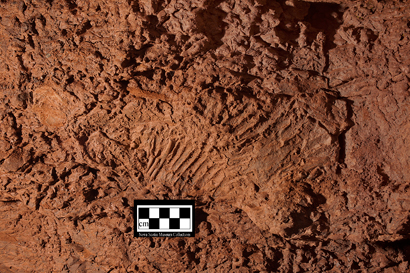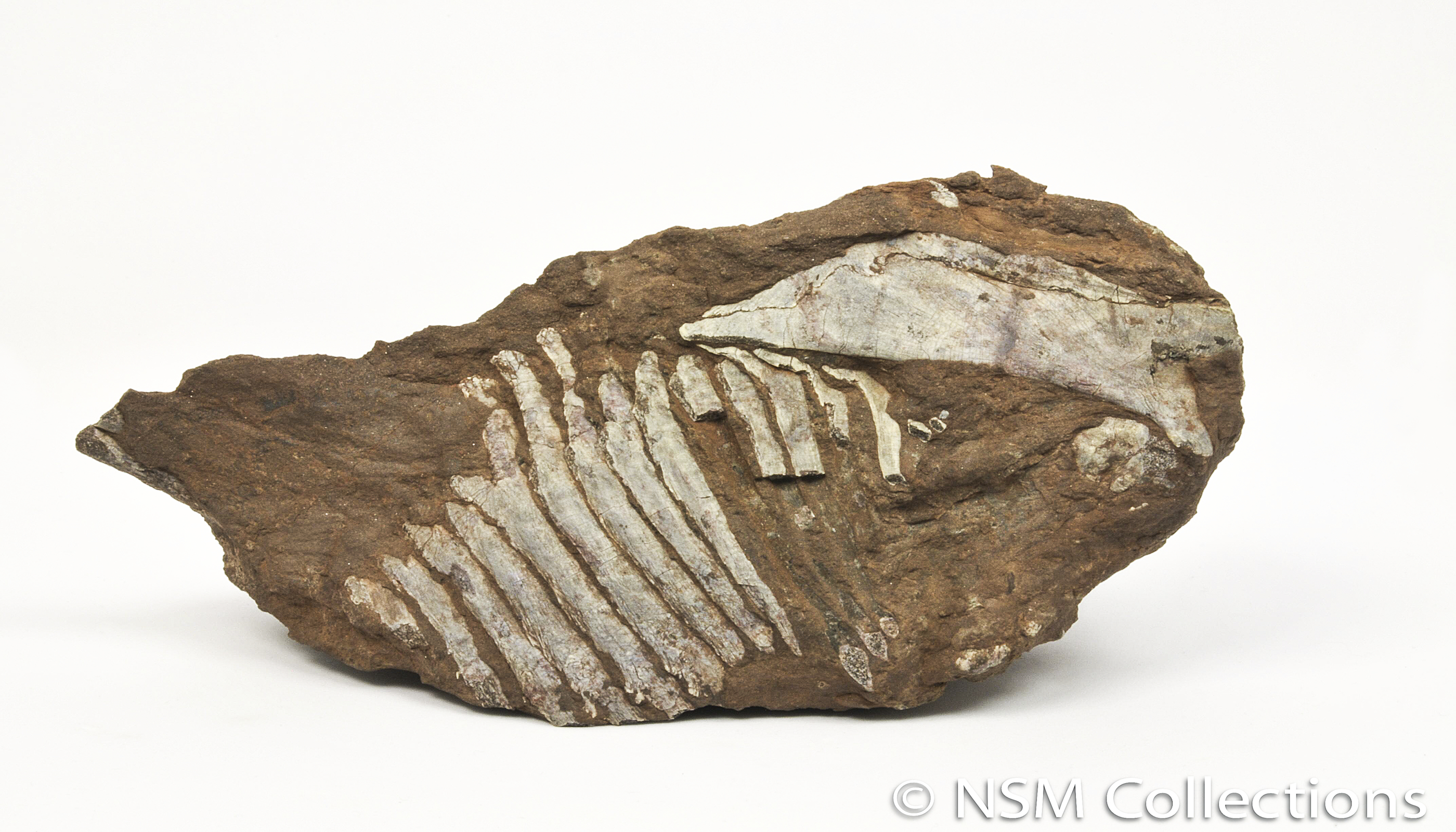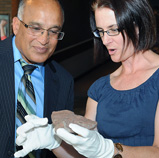Nova Scotia’s Oldest Superstar
Usually, the term ‘superstar’ is reserved for famous actors and musicians. In Nova Scotia, however, a very different kind of superstar was recently discovered.
View interactive 360° view of Superstar
On Thursday, August 16, a very significant Nova Scotian fossil was unveiled at the Museum of Natural History in Halifax. Discovered along the Northumberland Shore by the Keating family and placed under the care of Nova Scotia Museum Collections staff, this amazing fossil find has the potential to unearth a whole new level of understanding about Nova Scotia’s ancient world.
To get to the heart of what makes this fossil so special, Deborah Skilliter, Curator of Geology for the Nova Scotia Museum, took the time to tackle a ‘Superstar’ Q&A.
What’s the origin of the ‘Superstar’ nickname?
I nicknamed it ‘Superstar’ based on the amazing preservation of the bones and the fact that so much of the creature was discovered. It’s extremely rare to have such exquisite preservation/fossilization of the bones and also extremely rare to have so much of an animal preserved.
In order for something to become a fossil, it has to live, die and get buried by sediment quickly - otherwise, the organism gets destroyed. Also, there has never been a vertebrate animal fossil found in this part of the province before and that’s another factor that makes the fossil so special.

The fossil's discovery has been described as, potentially, one of the most significant finds in Nova Scotian history. Why is this?
I want to emphasize that it is only ONE of the most significant, not THE most significant fossil. Nova Scotia has one of the world's most amazing palaeontological records that spans many geological time periods - including the world's first reptile, the world's first land snail, the world's first evidence of herding behaviour/social behaviour in vertebrate animals, the world's smallest dinosaur footprints, Canada's oldest dinosaurs, and many others. This new fossil is special because of how much of it has been preserved and because of the fact that it is the first known vertebrate animal from this particular part of the province. Vertebrate animals do not fossilize as easily as aquatic organisms and they don’t usually get preserved so completely. This discovery really does open up a window into a part of our geological heritage that we don't know a lot about.
What type of research has already been conducted on the fossil?
The first thing we did was secure a Heritage Research Permit,which let us lawfully extract the fossil from the cliff face and conduct research at the discovery site. While there, we made a mold of the impression the fossil left in the sandstone cliff and then hammered out the impression itself. We also created a stratigraphic column, which is basically a picture representation of the rocks in which the fossil was found. This will be used to help us figure out what kind of environment the animal lived in. For example, we know from our study of the rocks in the cliff face that the animal was found at the base of a river channel.

What types of research do you plan to do in the future?
We’ve got a lot of really fun work planned! Along with my colleagues Ken Adams of the Fundy Geological Museum and Melissa Grey of Joggins Fossil Centre, we have teamed up with a palaeontologist in Ontario who specializes in animals from this time period (Carboniferous-Permian). Together, we will do "preparation" work on the fossil – meaning that we will use specialized tools to remove rock from the bones so we can see more of the fossil. This will help us learn more about the creature. We are also planning more visits to the discovery site to look for more fossils and to study the cliffs in more detail. Eventually, we will publish an article in a scientific journal that will describe the creature, describe the environment it lived in and, most importantly, announce its scientific name.
What are the long-term plans for the fossil?
The fossil is now permanently part of the Nova Scotia Museum Collection and essentially belongs to all people of the Province (with the Nova Scotia Museum designated as its caretaker). Once the research is complete, it will go on display at the Museum of Natural History, and then will travel to both the Fundy Geological Museum and the Joggins Fossil Centre for display, allowing many people to see 'Superstar' and learn about the rich geological history of Nova Scotia.


